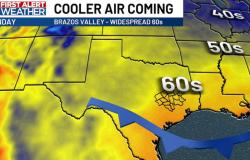REUTERS
—
Brazil’s Center for Research and Prevention of Aeronautical Accidents (Cenipa) said on Friday that a preliminary report into the August crash of a Voepass airliner showed icing detectors had been activated on the ATR aircraft.
According to a Cenipa official, the plane’s airframe icing button was activated at least three times during the flight, while cockpit recordings showed the copilot said there was “a lot of icing.”
The ATR-72 aircraft from local carrier Voepass swirled out of control before plunging to the ground on Aug. 9, killing all 62 on board.
Cenipa said that the copilot’s comment indicated that the plane’s de-icing system might have failed, but said that still needed to be confirmed.
According to Cenipa, investigations into the crash will probably last for over a year.
The preliminary report on the crash confirmed that the pilots had repeatedly turned the airframe de-icing system on and off.
The report gives a timeline of the flight but does not present clear causes.
“That is consistent with the flight crew being aware of airframe icing and them trying to deal with it using systems on board the aircraft,” said Anthony Brickhouse, a U.S. aviation safety expert.
The turboprop, bound for Sao Paulo’s international airport, had taken off from Cascavel, in the state of Parana and crashed in the town of Vinhedo, some 80 km (50 miles) northwest of Sao Paulo.
CNN has previously reported that numerous videos posted on social media show the turboprop ATR 72 in an apparent flat spin as it spiraled toward the ground with no visible forward movement in what became the 2024’s deadliest crash of a commercial airliner.
As investigations continue, air disaster experts CNN previously spoke to suggested that ice build-up on the plane could have triggered the catastrophic series of events.
In-flight icing can “distort the flow of air over the wing and adversely affect handling qualities,” according to Federal Aviation Administration documents, triggering an airplane to “roll or pitch uncontrollably, and recovery may be impossible.”
This is a developing story and will be updated.






